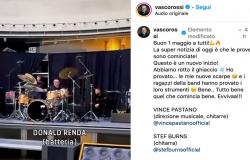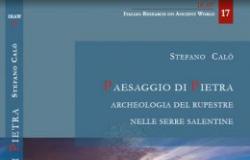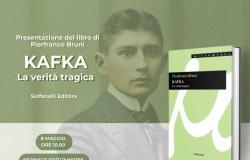On Saturday 27 April at 10.30 am, the Luigi Varoli Civic Museum of Cotignola finally reopens Casa Varoli to the public: after four years, the objects, works and archive of the papier-mâché artist Luigi Varoli (Cotignola, 1889-1958) finally return to live in his home-studio, now renovated and expanded. During this long construction site – also extended by the pandemic emergency – the Luigi Varoli Civic Museum has implemented a large project space, increasing the heritage through new acquisitions and carrying forward the production of contemporary works in dialogue with the collections themselves.
Starting in 1922, Luigi Varoli set up his studio in a building connected to the historic Palazzo Sforza. The bombings of Cotignola in the years 1944-45 spared neither the studio nor the Maestro’s house, which overlooked the same courtyard. After the war, the Sforza building was rebuilt to house both the home, on the ground floor, and the study on the first floor. Upon the artist’s death, it was donated by his wife Anna Cortesi to the Municipality of Cotignola and since 1991 it has been part of the Luigi Varoli Civic Museum. In March 2023, it obtained the “Houses and studios of illustrious people of Emilia-Romagna” brand from the Emilia-Romagna Region.
The new expansion of Casa Varoli took place thanks to the purchase of an adjacent building, which was then made communicating with the original space. A conjunction that has allowed not only to make it more accessible (via a lift, new services and reception space for the public), but also to increase its exhibition surface area, thus capable of hosting a completely renovated historical section, dedicated to two important events of the Second World War, which occurred in the Cotignola area.
The first event concerns the hospitality and protection offered to some families of persecuted Jews, inside the building now home to Casa Varoli, one of the symbolic places of a resistance that involved the entire community of Cotignola, through a network of solidarity led by Vittorio Zanzi, his wife Serafina Bedeschi, Luigi Varoli and his wife Anna Cortesi, recognized in 2002 by the State of Israel as “Righteous Among the Nations”. The second event is the dramatic front on the Senio river which took place from November 1944 to 10 April 1945 between the German and British forces, and which ended with the almost complete destruction of Cotignola, which had already been subject to continuous bombing for several months.
There are therefore two paths that are circularly joined in the layout of the new Casa Varoli: the first is that of the artist’s home-studio, a chamber of wonders, in which fragments and testimonies of the destruction of Cotignola following the allied bombings, works and objects belonging to and collected by the master; the second is that of the historical memory of the Second World War, focused on the hospitality granted to 41 Jews which sees Luigi Varoli among the protagonists of this heroic and courageous undertaking.
The world of Luigi Varoli’s home-studio is a magical, encyclopedic and full of wonder world which, after a visit to the art gallery of the Luigi Varoli Civic Museum located in Palazzo Sforza, thus allows one to fully understand and immerse oneself in the incredible wealth of visions, fantasies, memories and in the restless and curious gaze of the master from Cotignola. Thus, inside his house, we encounter wild bestiaries, skulls, horns and skulls of animals, chalks for copying and drawing, old squared photographs for portraits, ancient crucifixes and madonnas in ceramic and wood, faces, heads and masks sculpted, drawn , painted and in papier-mâché. There is no shortage of scores and rare musical instruments, and a library in which valuable editions stand out, above all two books by the futurist Fortunato Depero including the famous and unattainable “bolt book”. And also toys, and works of his many students and friends, such as Mattia Moreni, Fortunato Depero and Francesco Balilla Pratella, who saw the home-studio as a place of encounter and wonder, workshop and laboratory, school and museum.
But Casa Varoli is also contemporary art, one of the strongest vocations that the Varoli Museum has been able to cultivate in recent years. The entire exhibition itinerary of the new house-studio is punctuated by contemporary presences and works, both inside and in its garden: from the ceramist Nero/Alessandro Neretti who inhabits the courtyard with its forest of heads, monsters and capitals, to the sculptor Matteo Lucca and his work Azzimo 41 made of bread hands; and then the works born and produced around the visionary “Inventario Varoli” project including the videos by Mauro Santini, Marco Zanella, Michele Buda and Diego Gavioli. And also Frame, the multimedia installation by David Loom created for the museum in 2012 and adapted for the new space by the artist himself, and the comic L’Argine by Marina Girardi and Rocco Lombardi.
Luigi Varoli (Cotignola, 1889-1958) is a painter, sculptor, musician, educator and art teacher for adults and children. In addition to paintings, papier-mâché is undoubtedly the sector of production in which the artist’s most personal note is expressed. He studied at the Academies of Fine Arts in Ravenna and Bologna, then in 1922 he returned to Cotignola, where he remained for the rest of his life, in an almost symbiotic relationship with the town and the territory, and where he directed the School of Arts for his entire life and Crafts of Cotignola. In particular, his role as a teacher is significant: in his cenacle he in fact trained a dense group of artists from Romagna. After the armistice of 1943, he hosted Jews fleeing from the Nazi-fascists in his home: a humanitarian action which earned him, in 2002, the recognition of “Righteous Among the Nations” by the State of Israel.
Tags: years works archive return artists studio






